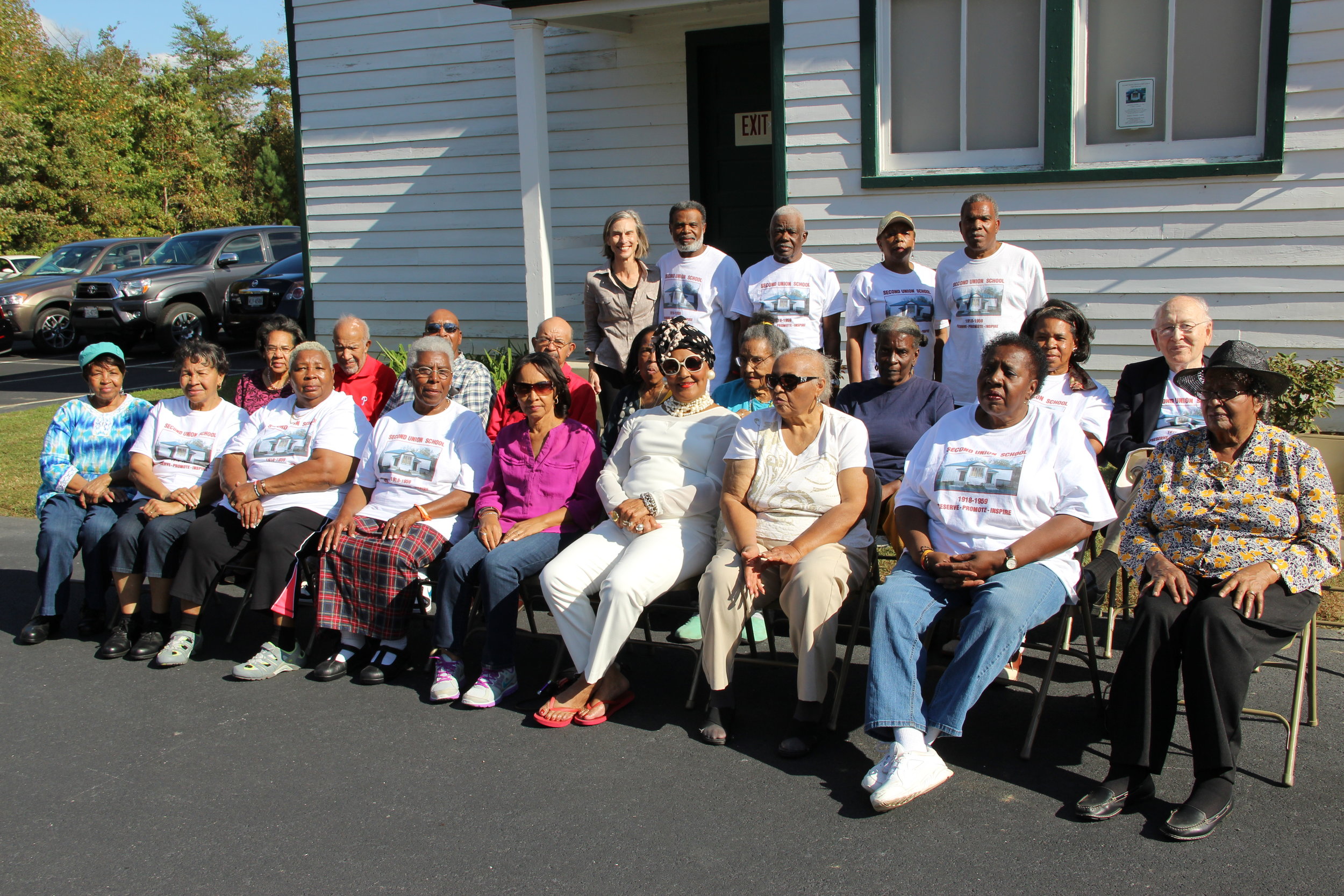The schools' names were chosen by the people that raised the money to build them and rarely included the name Rosenwald. This one, built in 1925 in Johnson County, Texas, is unusual -- its name is Friendship School (Julius Rosenwald).
This Alabama community gathers to celebrate one of the very first Rosenwald schoolhouses.
The buildings on the campus of Tuskegee Institute (now Tuskegee University) were designed and built by faculty and students. When the American flag flew there it had not been seen in that part of Alabama since before the Civil War.
When the National Trust for Historic Preservation named Rosenwald schools to its list of most endangered historic sites in America, many people were unfamiliar with the story of these iconic structures and no one knew for sure how many were still standing.
In placing the schools on the Most Endangered Historic Sites list, the National Trust was reacting to pressure from former students and community groups dedicated to keeping alive a piece of their history. From the Maryland and Virginia suburbs of Washington, D.C. to rural North Carolina, to the deep South and the rolling hills of East Texas alumni and concerned citizens are raising money and applying for grants to help them reclaim their Rosenwald school buildings and preserve the story they tell of community resolve and commitment to education.
When Julius Rosenwald died in 1932 there were over five thousand schoolhouses and school-related buildings in fifteen Southern states that had been built by the program that he and Booker T. Washington created in 1914. These were public schools, their funding provided by local jurisdictions in response to pressure from the Rosenwald Fund and the communities they were built to serve. Dollar for dollar, more money was contributed to the construction of Rosenwald schools by men and women with limited financial resources but limitless aspirations for their children than by Julius Rosenwald himself.
Some of the schools were isolated small white clapboard buildings on kudzu-lined country roads, others were larger and located in towns and even, a few, in cities. In 1954 when the Supreme Court ruled segregation in education unconstitutional the schools, built by African American communities for black children with the aid of funding from Rosenwald, became obsolete. As school districts moved (in some places slowly and in the face of considerable opposition) to consolidate their schools, they rarely chose to place integrated classes in formerly black schoolhouses. Many Rosenwald schools, once the pride of their communities, vanished – fell apart or were demolished without fanfare or notice. Several states have completed surveys of their remaining schools and about 150 have been placed on the National Register of Historic places. Many are on state historic registers or are acknowledged by signs and plaques.
The story of the creation of these schools weaves together the careers of two fascinating and significant figures, Julius Rosenwald and Booker T. Washington. The issues these men raised one hundred years ago — issues of race and opportunity, education and the importance of community — are with us still. Their contributions to our national conversation continue to reverberate.
A group of alumni -- with author Stephanie Deutsch -- in front of Second Union Rosenwald School in Goochland County, Virginia.



